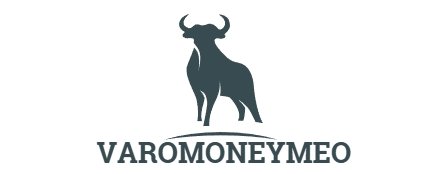
Over yesteryear 18 months the requirement for greater digitalisation is becoming obvious. Being an industry, the insurance sector is a that has traditionally been slow around the uptake of modern technologies, however in recent years it has started to make serious moves to modernise its approach.
Businesses encounter a number of problems be responsible for large insurance pay-outs every day. In retail for example, slips, trips and falls are constantly offering potential threats to customers and workers alike. Because these risks are most likely to happen in areas of high footfall such as shopping centres and supermarkets, the retail industry has traditionally been the worst hit. Just how can organisations during these industries utilise the benefits of digitalisation to mitigate these risks, reduce the burden of high insurance costs and keep staff and customers safe?
The Digitalisation of Insurance
Digitalisation systems are helping to aid the security of customers and custodians of the business, whilst providing real-time methods to potential risks posed at work. This can help cope with the costly results of insurance pay-outs.
Businesses payment of insurance premiums currently constitutes among the largest costs to businesses, next to the wages of staff and cost of rent. The digitalisation of the insurance process has led to a simpler claims processes, proactive and personalised services and seamless digital processes.
Preventable overhead costs of pricey insurance costs are an excessive burden for your company no matter how small or big the organisation may be. Expense is not the only detrimental impact insurance may have in your business. The timely nature of constantly revising an organisation's insurance policy can be combatted through real-time comprehensive data insights, saving your organisation valuable time and money.
On average healthcare insurance charges rise by 18% every year. For small organisations and entrepreneurs, the opportunity to mitigate the danger can help save substantial sums of money spent on insurance costs. The 2022 Gartner COVID-19 Customer Experience Survey implies that because the pandemic there is a marked increase, from 11% prepandemic to 19% post pandemic, for consumers only using technology or mostly using technology for getting together with insurance providers for claims.
Internet of products solutions are ensuring a mitigation of risks, a reduction in hazards and an alleviation of the pressure on businesses of huge insurance claims. In-depth, real-time data insights are allowing business to adequately assess potential risks and assure insurance products provided by the policyholders are rightly priced, based on past and current data utilised by IoT systems. Ale sensors, reports and alerts providing continuous information to businesses as well as their insurance firms. The continual flow of data informs businesses of risks and may prevent costly incidents from occurring.
Platforms provided by IoT providers enables both businesses and insurers to recognize, record and diminish risk in the workplace. The automated data collection systems work alongside AI-based responses leading to quicker resolutions to danger and supply vigorous defence claims. The machine-learning of the IoT systems determines that the systems are aware of past incidents of risk and from all of these past experiences will learn to recommend the very best antidote towards the problem.
Risk Identification
Through quicker identification, automated responses to risks and overall better reporting, the amount of incidents and severity of incidents could be reduced significantly. IoT systems administer a timestamp of potential incidents evidencing precisely what happened. Speeding up the claims process, whilst preventing the output of fraudulent or exaggerated claims. IoT systems extensively examine the sensors, automated reports and may highlight the exaggerated or fabricated claim.
The integrated digital platforms provided by IoT service providers empower businesses with full transparency and confidence within the management and processes in high-risk, high-footfall, high-output business facilities. Advanced insights allow businesses look around the data collected by IoT systems in greater detail than in the past. The opportunity to decide to look at individual user or group activity over customisable periods of time depending on your business's bespoke needs.
All of the also enables insights into task performance by frontline workers, incident reports and smart sensor data which alerts workers if you find a danger. The opportunity to better identify risks empowers frontline workers to resolve issues a lot more efficiently.
Insurance Partners
Through the creation of a new partnership between insurance companies and policy owners it comes with an chance of a period of co-operation between both. Resulting in reduced operational costs, less risk for that customer and provide a perception of better service for those involved. For example, based on Forbes, IoT may help insurers cut the price of the claims process by 30% whilst also lowering the premiums for consumers.
As an 'end-to-end' digital solution, IoT technology eliminates the time consuming nature of paper-based processes. The power for businesses' compliance officers to instantly be able to access historical records of incidents eliminates the risk of wasted some time and overhanging legal costs, that have been reported to increase corresponding to time it requires to solve the claim.
A report by the Boston Consulting Group in 2022 highlighted the importance of proactive and pre-emptive IoT services offering businesses a reduction in potential risk and also the customer a simple claim journey. The smoother running of the customer experience is reflected in the NPS scores of insurers and businesses who assure they will use IoT structures.
The motivational impact that IoT solutions play in the workforce is definitely an impact which cannot be underestimated. Through consistent assistance with what areas the workforce should be targeting to prevent risk and awareness of potential warning flags to the workers, enabling operational leaders to rapidly redeploy resources accordingly.
Insurance Transparency
IoT solutions permit complete transparency across frontline roles including security, maintenance, cleaning, and hospitality. This means businesses can concentrate on offering an exemplary service without worrying about potential hazards occurring.


